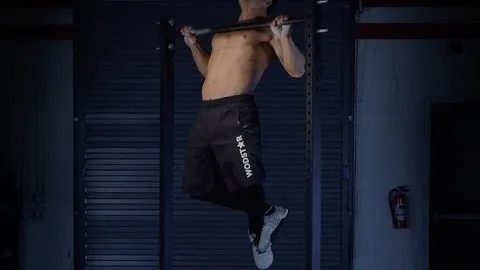
Kipping Chest to Bar Pull-Up Exercise: Developing Upper Body Strength and Stamina
Kipping chest to bar pull-ups are a dynamic and challenging exercise that targets the muscles of the back, shoulders, and arms. This exercise requires both strength and coordination, making it an excellent choice for those looking to improve their upper body power and stamina. In this guide, we will break down the key components of the kipping chest to bar pull-up and offer tips for proper form and technique.
Kipping chest to bar pull-ups offer several benefits for those looking to improve their upper body strength and overall fitness level. Here are some of the key advantages of incorporating this exercise into your routine:
Increased upper body strength: Kipping chest to bar pull-ups engage the muscles of the back, shoulders, and arms, helping to develop strength and definition in these areas.
Improved grip strength: The grip required to execute this exercise forces the fingers, hands, and forearms to work together, leading to increased grip strength.
Enhanced shoulder stability: The fast and explosive movement of the kipping chest to bar pull-up challenges the stability of the shoulder joints, promoting improved shoulder stability and injury prevention.
Cardiovascular endurance: Due to the dynamic nature of the exercise, kipping chest to bar pull-ups can also provide a cardiovascular challenge, helping to improve endurance and stamina.
To perform kipping chest to bar pull-ups effectively and safely, it's important to pay attention to proper technique and follow these essential tips:
To avoid injury and get the most out of your kipping chest to bar pull-ups, it's crucial to gradually increase the intensity and frequency of your workouts. Ensure that you have developed adequate strength and stability in your upper body before attempting this exercise.
If you are new to kipping chest to bar pull-ups, it's recommended to start with assisted variations, such as band-assisted pull-ups or using an assisted pull-up machine. These modifications can help you build the necessary strength and coordination to perform the exercise unassisted.
Begin by incorporating kipping chest to bar pull-ups into your routine twice a week, allowing for adequate recovery between sessions. As you become more comfortable and proficient, gradually increase the volume and intensity of your workouts.
Additionally, combining kipping chest to bar pull-ups with other exercises that target different muscle groups can create a well-rounded upper body workout. Pull-ups, rows, and shoulder exercises can be included in your routine to ensure balanced muscle development.
In conclusion, kipping chest to bar pull-ups are an effective exercise for developing upper body strength, stamina, and coordination. By following proper technique and progressively challenging yourself, you can make significant progress in your ability to perform this exercise. Remember to always listen to your body, maintain proper form, and consult a fitness professional if you have any concerns or specific goals. Incorporating kipping chest to bar pull-ups into your training routine can bring you one step closer to achieving your fitness goals and taking your upper body strength to new heights.
If you're looking for a gym, fitness club or yoga studio, you've come to the right place.
You can find information about gyms in your area. Browse catalog of gyms and find gyms with classes which are you looking for.
On gym page you can find simple information like address, phone or website. You can find list of available classes. You can check availability of personal training or small group classes. On place page you can also see information about open hours.
You can find gyms near you with amenities, courts, studios and equipments.
Use our map to find gym at your city or district.
In Gym Navigator you can find list of exercises with movies for many body parts.
You can browse exercises catalog and find exercises the best of you.
You can also find exercises grouped into workout plans, which you can use to improve you body. Each routine show you exercises one by one and give you possibility to count you progress and count down rest time.